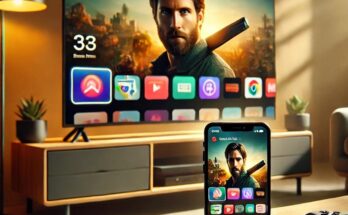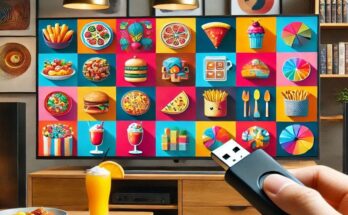Light-emitting diode (LED) displays have revolutionized visual communication, adorning storefronts, stadiums, and even finding their way into our homes as televisions. But have you ever wondered what determines the clarity and sharpness of an LED display? The answer lies in a crucial concept called pixel pitch. This article delves into the world of pixel pitch, explaining its significance, how it affects image quality, and factors to consider when choosing an LED display.
Unveiling the Building Blocks: Pixels and Pitch
Pixels: The Tiny Titans of Display: Imagine a giant mosaic – an LED display is essentially a grid of these tiny building blocks called pixels. Each pixel, composed of one or more LEDs, emits light to create a single point of color. The arrangement and manipulation of these pixels determine the image displayed on the screen.
Understanding Pixel Pitch: Pixel pitch refers to the distance, measured in millimeters (mm), between the centers of two adjacent pixels. Think of it as the space between each tile in your mosaic. A smaller pixel pitch signifies a higher density of pixels crammed into a specific area, resulting in a finer and sharper image. Conversely, a larger pixel pitch translates to fewer pixels and a less detailed image.
The Analogy of Resolution: Just like megapixels determine the resolution of a camera image, pixel pitch dictates the resolution of an LED display. A higher pixel pitch display, with fewer pixels per unit area, will have a lower resolution and appear grainy from a close viewing distance. On the other hand, a lower pixel pitch display, packed with pixels, boasts a higher resolution and delivers a sharper, more detailed image.
Unveiling the Impact: Pixel Pitch and Image Quality
Now that you understand the core concept, let’s explore how pixel pitch directly affects the image quality of an LED display:
-
Sharpness and Detail: A lower pixel pitch (smaller distance between pixels) allows for a more precise representation of details in the image. Imagine a high-resolution photograph – the finer details are clearly visible. Similarly, an LED display with a lower pixel pitch displays sharper and more detailed images.
-
Viewing Distance: The optimal viewing distance for an LED display is directly linked to its pixel pitch. Displays with a larger pixel pitch are suitable for viewing from afar, such as billboards or stadium screens. On the other hand, displays with a lower pixel pitch are ideal for closer viewing distances, such as video walls in conference rooms or home entertainment systems.
-
Moiré Effect: This visual phenomenon occurs when the spacing of pixels on the display clashes with the resolution of the content being displayed, creating a wavy or moiré pattern. A lower pixel pitch display minimizes the chances of this effect, ensuring a clear and undistorted viewing experience.
Unveiling the Factors to Consider: Choosing the Right Pixel Pitch
Selecting the ideal pixel pitch for your LED display hinges on several factors, ensuring you get the best value for your investment:
-
Viewing Distance: Consider the primary viewing distance for your display. For distant viewing (over 6 meters), a larger pixel pitch (above 6mm) might suffice. For closer viewing distances (less than 3 meters), a lower pixel pitch (below 4mm) is recommended for optimal image quality.
-
Content Type: The type of content displayed on the LED screen also plays a role. Text-based content requires a lower pixel pitch for better readability. For video content or presentations with intricate details, a lower pixel pitch ensures a sharper image.
-
Budget: Lower pixel pitch displays tend to be more expensive due to the increased number of LEDs required. Determine your budget and choose the pixel pitch that offers the best balance between image quality and affordability.
Beyond Pixel Pitch: While pixel pitch is crucial, it’s not the sole factor determining image quality. Other considerations include LED type, refresh rate, and viewing angle. Research these aspects alongside pixel pitch to make an informed decision.
Unveiling the Future: The Evolution of Pixel Pitch
The quest for ever-clearer and more immersive displays continues. Here’s a glimpse into the future of pixel pitch:
-
MicroLED Technology: This cutting-edge technology employs microscopic LEDs, enabling ultra-low pixel pitches (below 1mm). Imagine a display with unparalleled sharpness and detail, virtually indistinguishable from reality.
-
Virtual Reality Integration: As virtual reality (VR) gains traction, LED displays with even lower pixel pitches might be required to create seamless and immersive VR experiences.
By understanding pixel pitch and its impact on image quality, you’re now equipped to make informed decisions when choosing an LED display. Whether for commercial use or personal entertainment, selecting the right pixel pitch ensures you get the most out of your investment. Remember, the ideal pixel pitch depends on your specific needs. Here’s a quick recap to guide you:
- For distant viewing (over 6 meters): A larger pixel pitch (above 6mm) might suffice, often seen in billboards or stadium screens.
- For closer viewing distances (less than 3 meters): A lower pixel pitch (below 4mm) is ideal for video walls, conference rooms, or home entertainment systems.
Don’t hesitate to consult display professionals who can guide you based on your intended use, budget, and viewing requirements. With the knowledge of pixel pitch at your disposal, you can confidently navigate the world of LED displays and choose the one that delivers the stunning visual experience you deserve.



